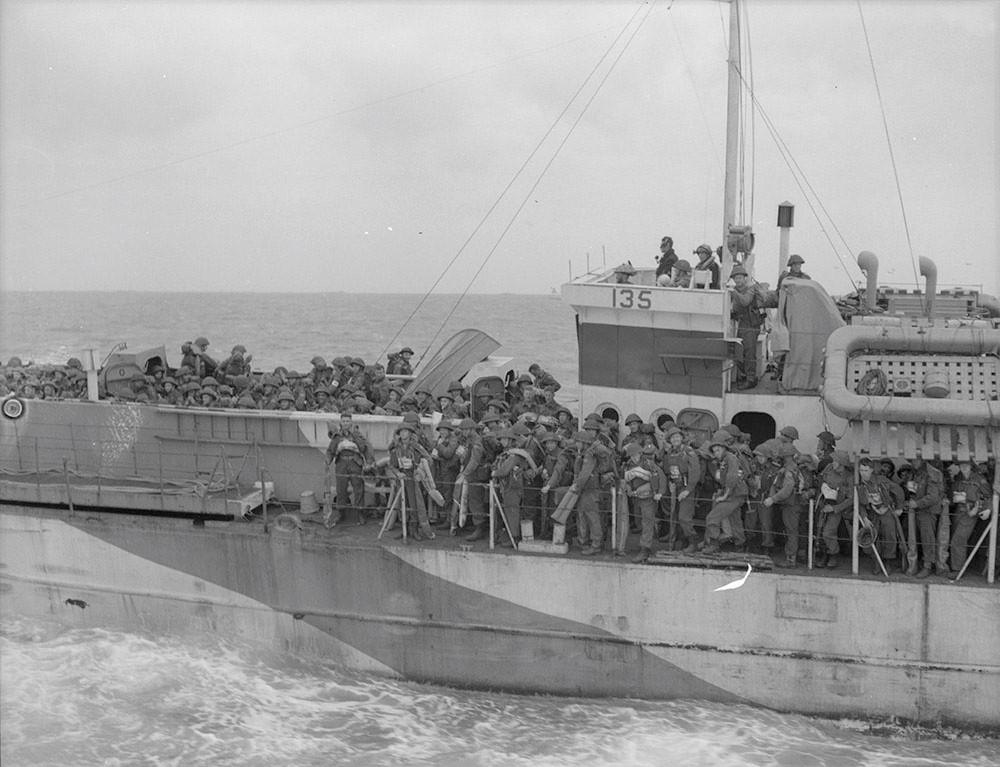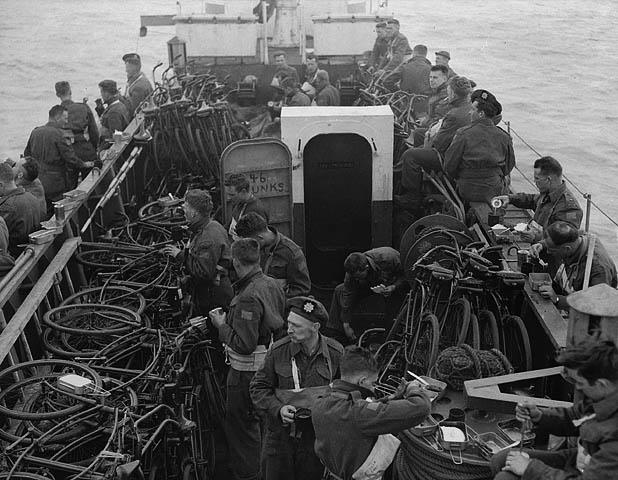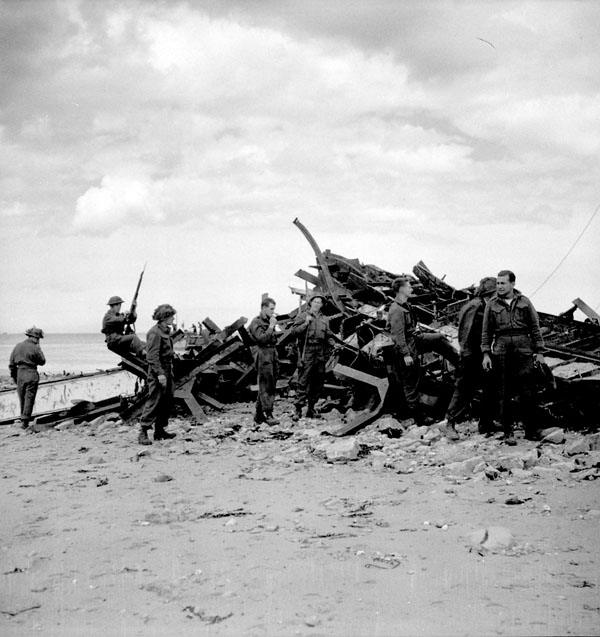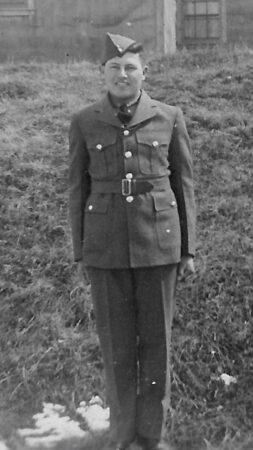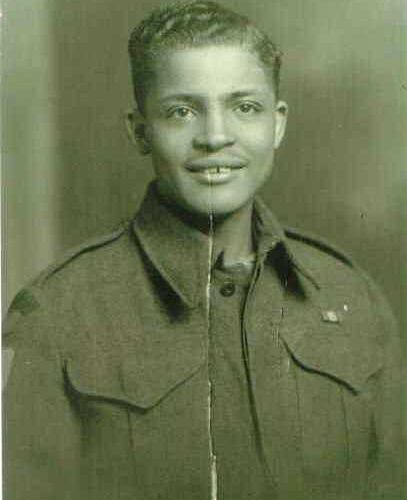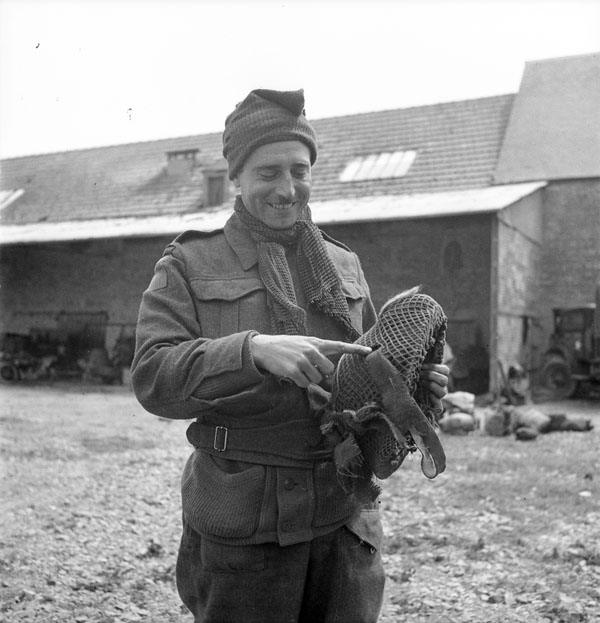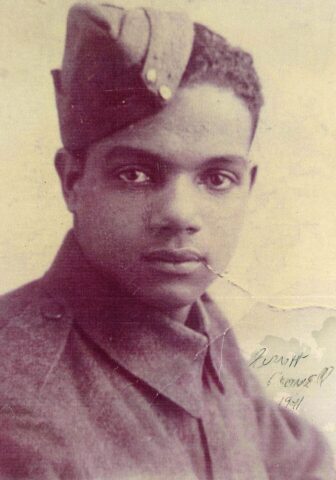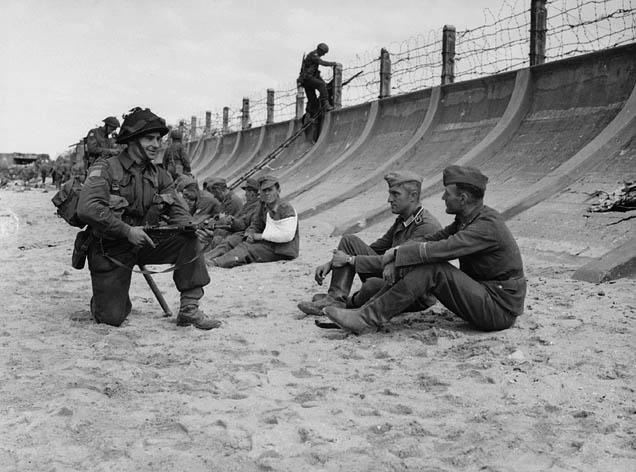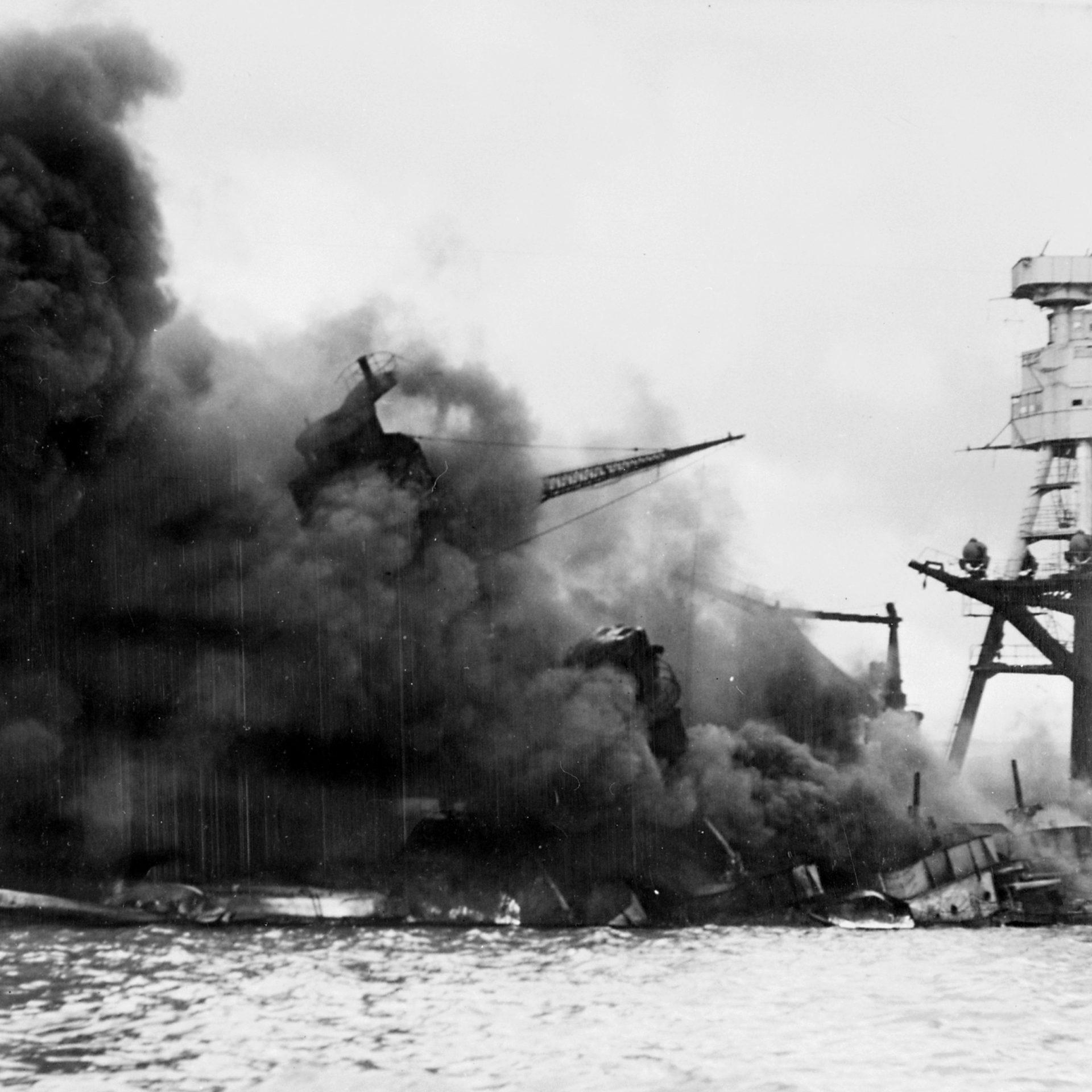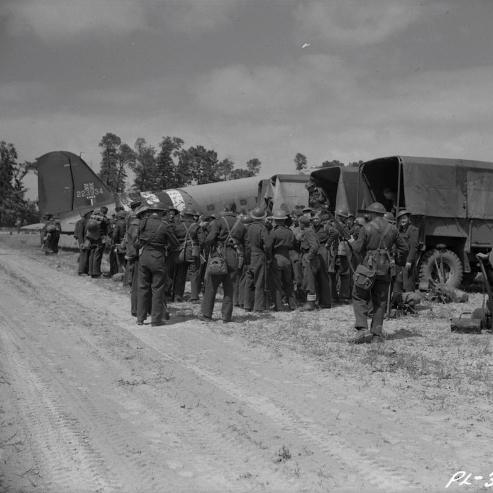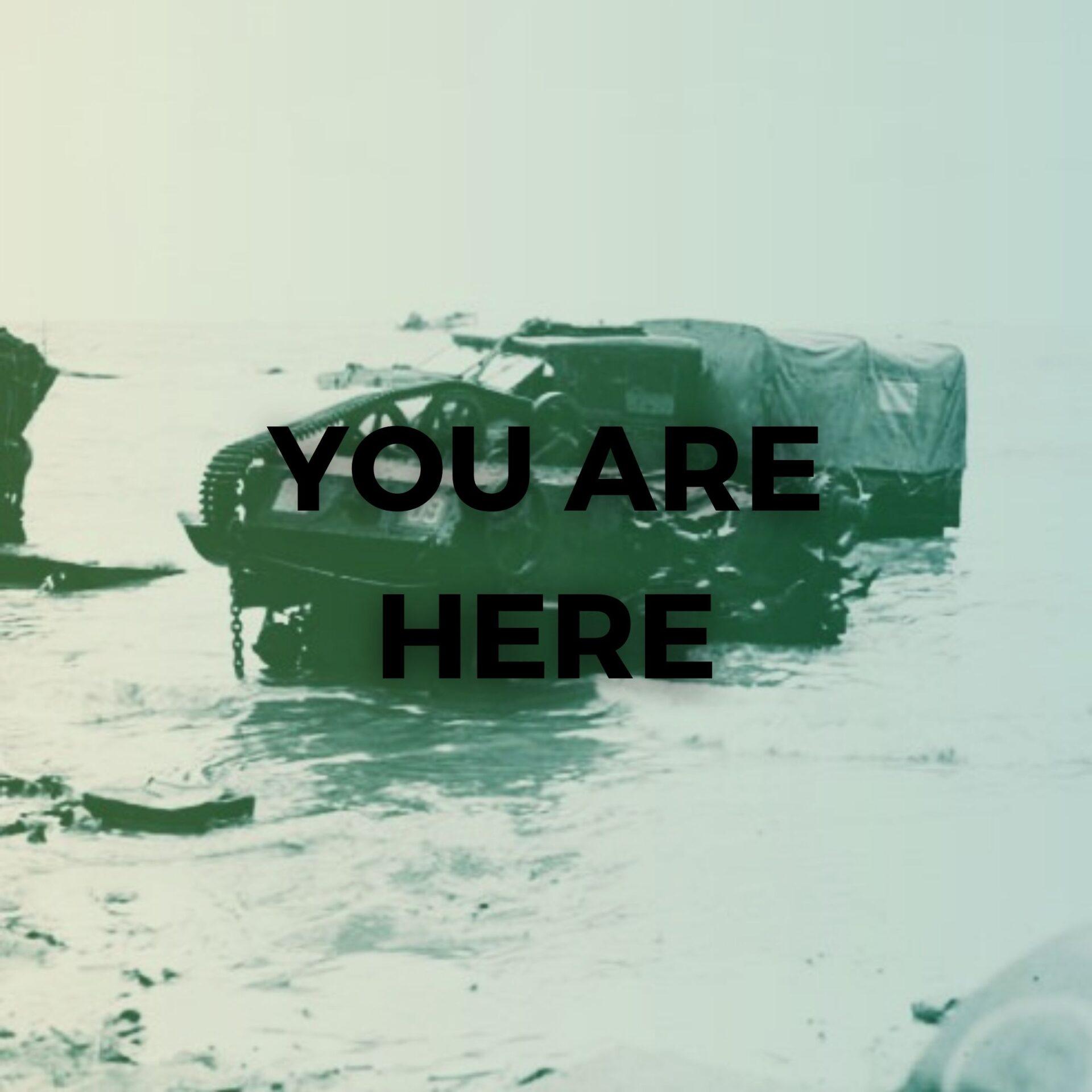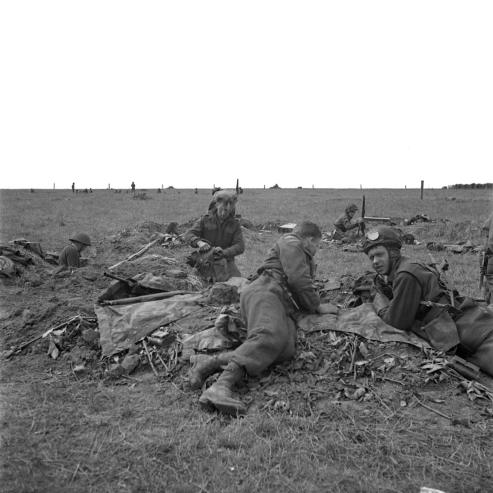D-DAY, JUNE 6, 1944
FROM THE BEACH TO THE COUNTRYSIDE
EXPERIENCING COMBAT
In the early morning, the Canadian Army arrived at Juno Beach to a furious welcome from the German fortifications. While the Allies’ air and sea bombardments were able to cover the advance of the landing ships, the enemy defences were unyielding. On the beach, the Canadians encountered unrelenting machine-gun fire from the Germans and contended with land mines that caused great destruction. Many ships were damaged during the landings, and the soldiers were forced to swim to shore with all of their equipment.
“That’s the farthest point inland that anybody got that night, I think it was seven miles in.”
– Frederick Rogers, signalman, Veterans Affairs Canada
After capturing the coastline, the Canadians moved to Courseulles-sur-Mer, which overlooked the beach, and secured the town and surrounding villages. Despite the high casualties, the landing was a great success thanks to the sustained assaults and the soldiers’ resolve.
“You didn’t have time to think about anything, nothing. You just did your thing best you could.”
– John Hall, radio operator, Veterans Affairs Canada
Commando “W” approaches Mike Beach, July 8, 1944.
“You know, it’s a terrible thing to hold someone in your arms, you know, when he’s dying.”
– Harold Hague, member of the Royal Canadian Navy, Veterans Affairs Canada
Francis Godon (1924-2019)
“Crawl and run and crawl and run. And one thing you couldn’t do was stop on Juno Beach. If your buddies got hurt during that and the yelling and crying, you couldn’t stop, you had to keep going. If you stopped, well you were a dead duck too. So you had to keep going. Which was a hard thing to do because the beach was something like ketchup on the beach was, when we made the beach. That’s how blood red the beach was.”
– Francis Godon, soldier for the Royal Winnipeg Rifles, Courtesy of Historica Canada
Lloyd Turner (1923-2002)
Born in Toronto, Sergeant Turner joined the Queen’s Own Rifles of Canada, with whom he fought in France, Belgium and Germany until the end of the war.
“As soon as the door dropped, we started running for the retaining wall. The Germans were firing by that time. I looked back and saw some of these guys lying on the beach, and others lying half in the water and the tide was taking them. […] “What the hell am I doing here?” I said “They’re trying to kill us!””
– Lloyd Turner, Sergeant for the Queen’s Own Rifles, The Queen’s Own Rifles of Canada Regimental Museum and Archive
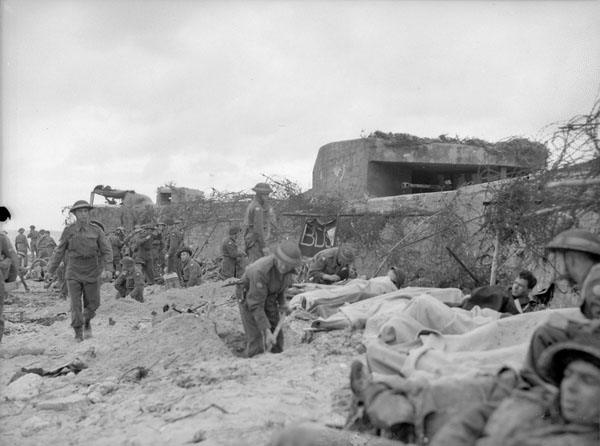
THE CANADIAN SOLDIER AT THE FRONTLINE
Everett Cromwell (1921-2019)
Courtesy of Historica Canada.
“We had thirty truck loads of ammunition, we had thirty truck loads of jerry tins, gas, and we had thirty truck loads of combo packs and we kept moving up off where we go and then we’d stop and then we’d off load, get settled, emptied everything off off our trucks and then stack them up […] and then we’d go back down to the beach where they had the big depots and then load up and then take it up through supply the units as we go along […].”
– Everett Cromwell, member of the Royal Canadian Army Service Corps, Veterans Affairs Canada
LÉO MAJOR
THE CAPTURES OF NORMANDY
Private Léo Major landed in Normandy on June 6, 1944, with Le Régiment de la Chaudière. He and his unit neutralized the first German bunker and captured a dozen German soldiers. This exploit saved the lives of many members of the Queen’s Own Rifles who were trapped on the beach. That same afternoon, Léo Major and a fellow soldier repeated their feat by capturing a German armoured vehicle.

